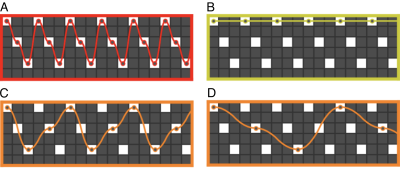Weekend Educational Session
fMRI Across Spatial & Temporal Scales
| Saturday Parallel 3 Live Q&A | Saturday, 8 August 2020, 15:30 - 16:00 UTC | Moderators: Richard Buxton & Susan Francis |
Session Number: WE-11
Overview
Functional MRI (fMRI) is a versatile and multi-faceted tool to noninvasively probe the living brain. This course is designed to provide a comprehensive overview of currently available fMRI methods at the different spatial and temporal scales. The first lectures will cover state-of-the-art acquisition sequences for BOLD as well as approaches to data denoising, before moving on to non-BOLD and calibrated BOLD techniques. The second half of the course will explore the spatial and temporal limits achievable with fMRI, with lectures covering fMRI at laminar spatial resolution and fMRI at extremely high frame rates. Finally, functional spectroscopy as an emerging technique will be covered.
Target Audience
Any researchers and clinicians interested in the cutting edge fMRI acquisition at the limits of spatial or temporal resolution
Educational Objectives
As a result of attending this course, participants should be able to:
- Described the state-of-the-art acquisition sequences for BOLD fRMI;
- Identify and apply data denoising approaches to cleaning fMRI time series;
- Recognize calibrated BOLD acquisition as well as non-BOLD alternatives to measuring fMRI signals;
- Describe the currently available techniques and best practice in fMRI at laminar resolution;
- Describe techniques for very rapid sampling of the fMRI response; and
- Describe techniques to measure functional metabolic responses.
 |
State-of-the-Art Echo-Planar BOLD Acquisition
Rüdiger Stirnberg
This lecture reviews state-of-the-art 2D and 3D sequences with a focus on gradient echo EPI acceleration with controlled aliasing (CAIPIRINHA). The audience should learn which rapid EPI-based methods for BOLD fMRI are available and what to consider to minimize noise or artifacts due to strong parallel imaging, if needed, for the respective study goal.
|
|
| Denoising Techniques
Lars Kasper
Noise is the eminent adversary when studying brain function. First, it incurs sensitivity loss for our small effects of interest by drowning them in un(cor)related fluctuations. Second, noise may correlate with effects, reducing specificity or increasing false positives by conflating them with fluctuations of non-neuronal origin. Here, we revisit how both the scanner and the subject generate noise in fMRI time series through different pathways, namely as thermal noise, encoding noise (magnetic field), and physiological noise of different origin. We structure different approaches to noise mitigation following the recycling waste hierarchy, which also applies to sustainable science: avoid, reduce, reuse. |
||
| Non-BOLD fMRI
Harald Möller
While the BOLD contrast is widely applied to map brain activity, it is also fundamentally limited as it provides only an indirect measure of neural activation that cannot be straightforwardly quantified and is inherently limited in its spatial specificity. Consequently, alternative methods have evolved to address such limitations. Here, we will primarily focus on measurements of CBF and CBV changes as currently popular ‘non-BOLD’ contrasts in human fMRI studies of the neurovascular coupling or at laminar resolution.
|
||
| Oxygen Metabolism & Calibrated BOLD
Esther Warnert
|
||
| fMRI at High Spatial Resolutions: Layers & Columns
Luca Vizioli
The aim of this talk will be to provide a brief overview of some of the main challenges of performing laminar and columnar fMRI, highlighting some of the strategies that can be adopted to tackle such problems.
|
||
| fMRI across high temporal scales
Burak Akin
With the advent of fast fMRI sequences, whole brain fMRI data can be acquired in few hundreds of milliseconds. Although fast acquisitions are not necessary to sample the low frequency (<0.1Hz) fluctuations associated with most of the BOLD activity. Approaches with increased temporal resolution have some advantages like allowing dynamic connectivity analysis and potential to reveal transient changes of the brain function. This lecture will cover a short overview of available fast fMRI techniques, their advantages over widely used EPI sequence and finally potential applications in brain imaging.
|
||
| Functional Spectroscopy
Adam Berrington
|

 Back to Program-at-a-Glance
Back to Program-at-a-Glance Watch the Video
Watch the Video Back to Top
Back to Top